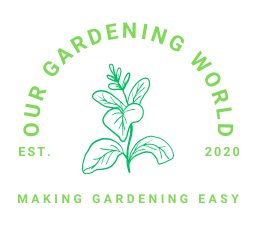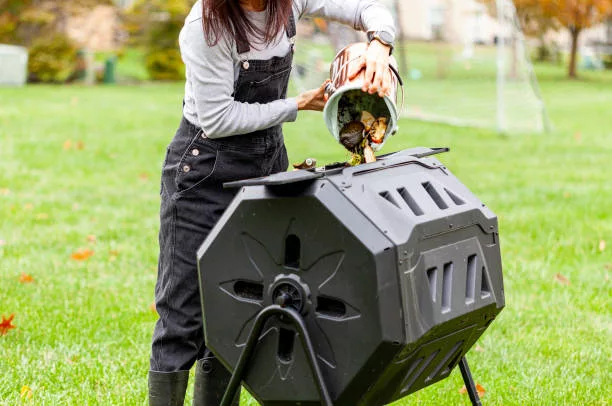Welcome, budding environmentalist! You’ve taken a fantastic first step towards sustainable living by exploring the world of composting. In this beginner’s guide, we’ll be revealing six exciting facts on composting that will not only enlighten you but also motivate you to kick-start your composting journey. Brace yourself for a fun, eco-friendly ride!
Facts On Composting Section 1: Nature’s Recycling Process
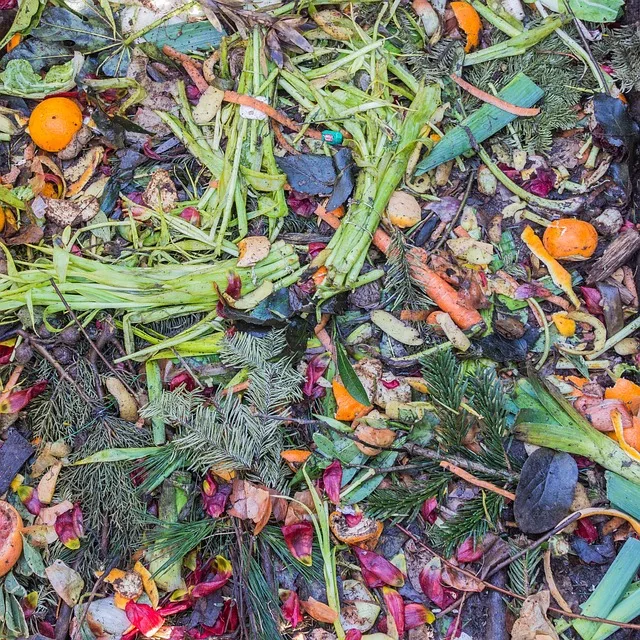
Is it not fascinating to think that nature has its very own recycling system? Composting, a naturally occurring biological process, is the epitome of this system. Imagine every bit of organic waste you generate — the apple peels from your morning snack, the leftover vegetable scraps from cooking dinner, and the heap of lawn clippings from your weekend gardening — all having the potential to transform into something truly valuable.
Indeed, composting allows us to harness the inherent recycling capacity of nature, turning our everyday organic waste into a nutrient-packed soil conditioner, fondly known as compost. Picture the process as a beautiful metamorphosis: what was once regarded as ‘waste’ rebirths into a rich, organic substance that gardeners dub ‘black gold.’
So, what exactly makes compost so fantastic? Well, it’s bursting with the very nutrients that our plants crave — nitrogen, phosphorus, and potassium, among other vital elements. When mixed with garden soil, compost acts as a natural and effective fertilizer, fostering robust and healthy plant growth. It revitalizes the soil, improving its structure, enhancing its moisture retention, and fostering the growth of beneficial bacteria and fungi that contribute to nutrient cycling.
But the magic of composting doesn’t stop at garden improvement. A fun fact on composting to keep in mind is its impressive potential to combat waste accumulation. It’s estimated that up to 30% of household waste is organic and can be composted. By redirecting these scraps from our trash cans to our compost bins, we can significantly reduce the volume of waste that finds its way to landfills.
This is no small feat, considering that landfills are among the largest human-generated sources of methane, a potent greenhouse gas that contributes significantly to climate change. By composting, we’re not just nurturing our gardens; we’re playing our part in a more extensive environmental conservation effort.
In essence, composting is our chance to contribute positively to the cyclical rhythm of nature. With each banana peel, coffee ground, or leaf pile we add to our compost bin, we assist nature in doing what it does best: recycling and renewing. So let’s roll up our sleeves and let the transformation begin, one compost bin at a time!
Facts On Composting Section 2: Composting Reduces Landfill Waste
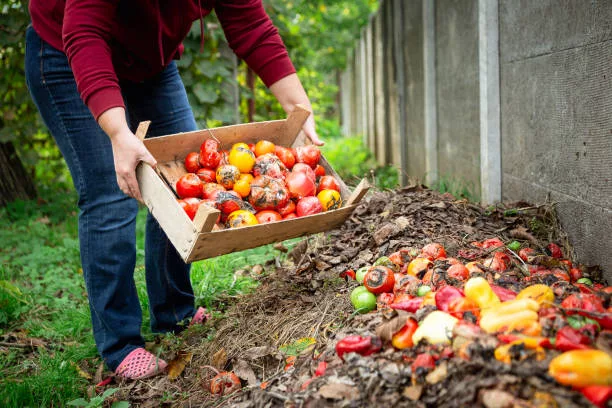
Isn’t it mind-boggling to think that something as simple as composting can have such a profound impact on our planet’s health? This sustainable practice, rooted in the age-old wisdom of nature, is capable of significantly slashing the amount of waste we send to landfills.
Let’s take a closer look at how this works. Imagine your daily routine at home. How many times do you find yourself tossing out food scraps or yard waste? Now consider this: about 30% of the waste produced by an average household is organic, and can be composted. That’s a considerable chunk of waste that could be given a new lease on life as nutrient-rich compost instead of ending up in the ever-growing mountains of landfill waste!
Turning kitchen scraps, like apple cores, carrot peelings, coffee grounds, and wilted lettuce, along with yard waste, such as grass clippings, fallen leaves, and small branches, into compost not only gives these materials a second chance, but it also helps to alleviate the strain on our waste management systems.
But the perks of composting don’t stop at reducing landfill waste. An often-overlooked fact on composting is its potential to curb the emissions of methane, a potent greenhouse gas. You see, when organic waste is dumped in landfills, it decomposes anaerobically (without oxygen), leading to the production of methane. Methane is a significant contributor to climate change, with a global warming potential that is 25 times greater than carbon dioxide over a 100-year period.
However, the composting process is aerobic (with oxygen), which means it produces carbon dioxide instead of methane. While carbon dioxide is also a greenhouse gas, its impact on global warming is significantly less than that of methane. So by composting your organic waste, you are actively playing your part in mitigating climate change!
Picture composting as your personal, hands-on environmental project, with benefits that reach far beyond your own backyard. It’s an opportunity to reduce the waste you generate, shrink your carbon footprint, and contribute positively to a healthier planet, all while creating a superior soil amendment for your garden. So, let’s turn those peels, clippings, and scraps into a victory for our planet—one compost pile at a time!
Facts On Composting Section 3: Composting Boosts Soil Health
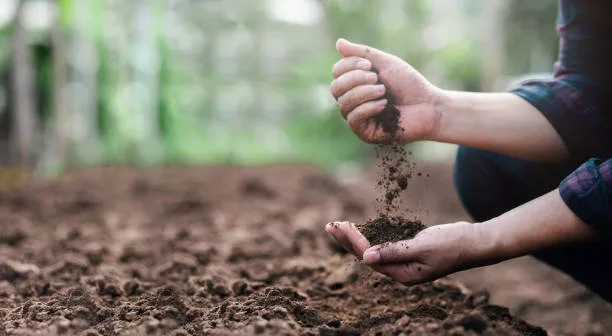
Have you ever wondered what makes a garden truly flourish? The secret lies beneath the surface, in the quality of the soil. One of the most enlightening facts on composting is how it dramatically improves the health of the soil. So, if you’re a budding gardener or a seasoned green thumb seeking healthier, happier plants, composting is a practice you should definitely embrace.
Let’s explore how compost works its magic beneath our feet. By enriching the soil with organic matter, compost transforms its structure, fostering an environment where plants can thrive. The compost particles bind with the soil particles, creating larger, aggregated particles that improve the soil’s physical properties. What does this mean for your garden? It translates to soil that has better water-holding capacity, superior drainage, and greater resistance to erosion.
But the benefits of compost go beyond just moisture retention. It is teeming with essential nutrients that plants need to grow strong and healthy. When you incorporate compost into your soil, you’re supplying a slow-release source of macro and micronutrients, including nitrogen, phosphorus, and potassium, among others. These nutrients are released gradually over time, providing a steady diet for your plants and reducing the need for synthetic fertilizers.
One of the less known facts on composting is how it contributes to biological soil health. Compost introduces a host of beneficial microorganisms to the soil, including bacteria, fungi, and other tiny creatures that form the backbone of a healthy soil ecosystem. These microbes play an essential role in breaking down organic matter into forms that plant roots can absorb, effectively turning your soil into a buffet of nutrition for your plants.
Another bonus? These microbes are not just good for nutrient cycling. They also help suppress plant diseases and pests. They do this by outcompeting disease-causing organisms and even producing substances that inhibit these pathogens. So, by adding compost to your soil, you’re fortifying your plants’ defenses against disease, giving them a better chance of survival and success.
Looking at these facts on composting, it’s clear that compost is a true superhero of the soil. By enriching your garden with compost, you’re investing in a vibrant, fertile growing environment that will reward you with bountiful plants. So, whether you’re growing roses, tomatoes, or a lawn, remember that a little compost can go a long way in ensuring your garden’s vitality and productivity!
Section 4: Fact #4 – Clearing the Air: Composting Doesn’t Have to Stink!
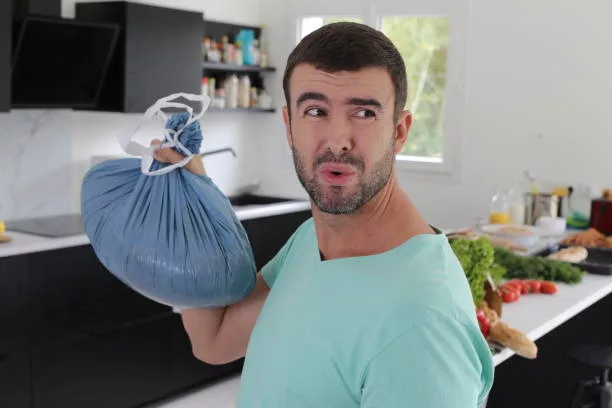
Have you ever held back from composting because of the worry that it might stink up your backyard or even your whole neighborhood? Well, you’re not alone. One of the most pervasive misconceptions about composting is that it’s a smelly business. However, one of the surprising facts on composting is that it doesn’t have to be that way at all! A well-managed compost pile can actually have a pleasant, earthy aroma akin to that of a forest floor.
So, how exactly does one prevent their compost pile from smelling bad? The key to a sweet-smelling compost pile lies in achieving the right balance of ingredients and maintaining proper aeration.
Think of your compost pile as a gourmet meal for microbes. These tiny decomposers need a balanced diet of ‘green’ materials, which are high in nitrogen, and ‘brown’ materials, which are high in carbon. Greens include items like vegetable peels, fruit scraps, coffee grounds, and fresh grass clippings. Browns, on the other hand, consist of materials such as dry leaves, straw, paper, and small branches.
When the ratio of greens to browns is just right, usually around 1:2, your compost pile will be a hotbed of microbial activity, breaking down the materials efficiently without any foul odors. If your compost pile starts to smell unpleasant, it’s usually a sign that something is out of balance. Too many greens can cause the pile to become overly wet and smelly, while an excess of browns can slow down the composting process.
The other crucial factor for odor-free composting is aeration. Turning your compost pile regularly, say, once a week, helps introduce oxygen, which is vital for the aerobic bacteria doing most of the decomposition work. Without enough oxygen, the pile can become anaerobic, leading to slow decomposition and the production of smelly gases.
Looking at these facts on composting, it becomes clear that composting doesn’t have to be a stinky affair. With a little knowledge and effort, you can maintain a compost pile that’s not only odor-free but also efficient at transforming your organic waste into nutrient-rich compost. So, don’t let the fear of bad smells hold you back from reaping the many benefits of composting!
- Large Capacity: With a 43-gallon capacity, the VIVOSUN Outdoor Tumbling Composter offers ample space to turn kitchen scraps and yard waste into nutrient-rich compost for your garden.
- Dual Chamber Design: The composter features a dual-chamber design, allowing you to fill one side while the other side cures, hence facilitating a continuous composting process.
- Durable Construction: Made of premium, UV-resistant, recycled polypropylene, this composter is designed to withstand harsh weather conditions and offer long-lasting performance.
- Easy to Use: The tumbler design makes it easy to turn and mix the compost material. It comes with a black door for easy loading and unloading of compost materials.
- Effective Aeration System: The VIVOSUN Outdoor Tumbling Composter comes equipped with air vents to allow needed airflow for composting, which speeds up the decomposition process.
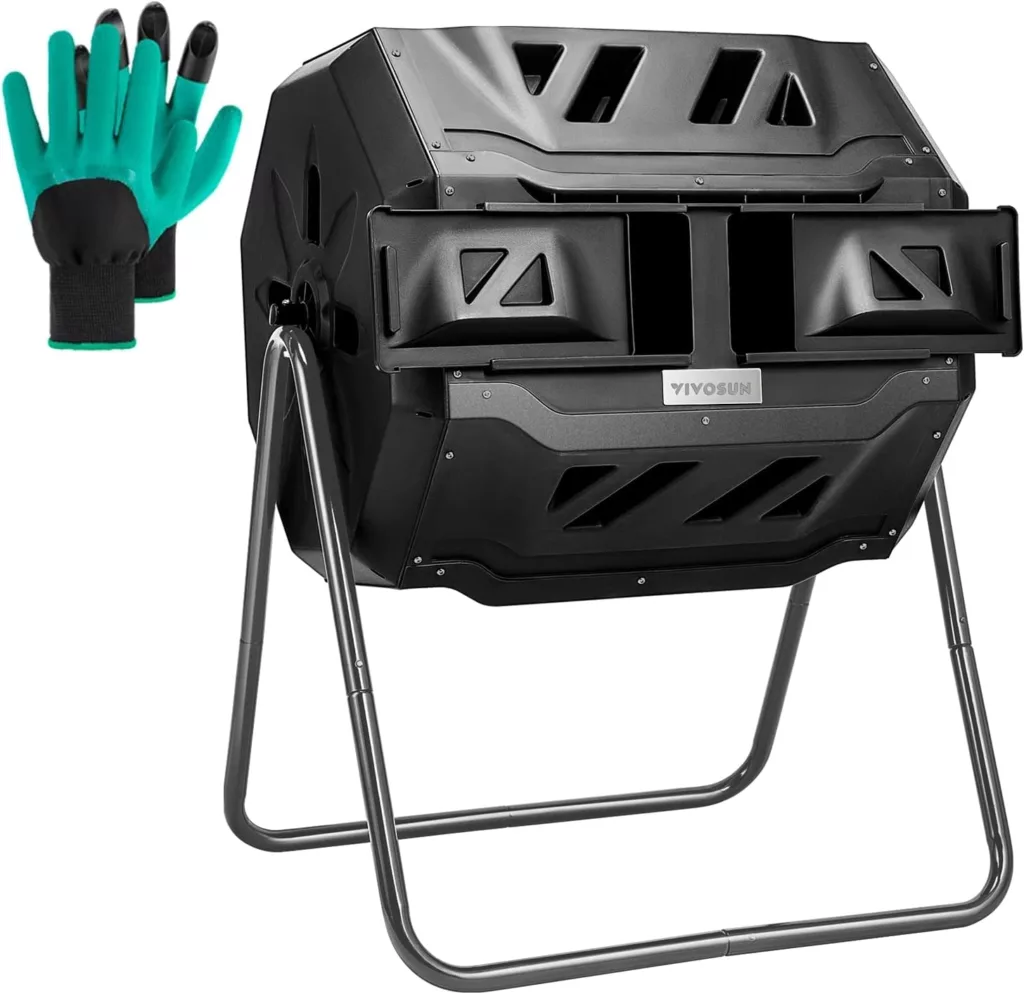
Section 5: Fact #5 – Keeping the Peace: How Composting Doesn’t Have to Invite Pests
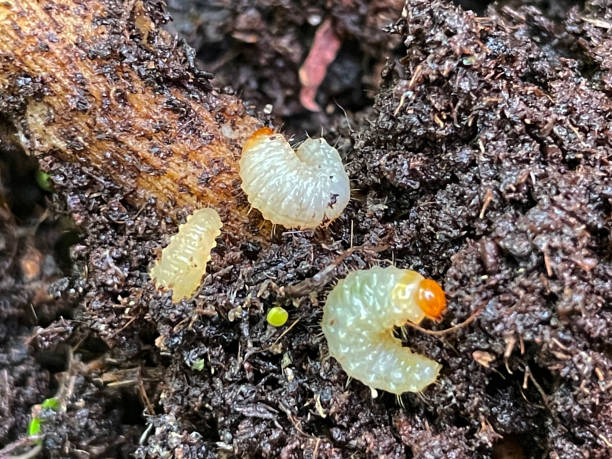
One of the fears often associated with composting is the worry that it might turn your backyard into a hotspot for pests. The thought of unwanted critters rummaging through your compost pile can be unsettling, to say the least. However, you’ll be glad to know that one of the lesser-known facts on composting debunks this myth. With a well-managed compost pile, you can say goodbye to the pest problem!
So, how do you maintain a compost pile that doesn’t roll out the welcome mat for rodents and other pests? The answer lies in mindful composting practices. A crucial aspect of this is being selective about what you add to your compost pile.
Certain materials are like magnets for pests. Meat scraps, dairy products, cooked foods, and oily or fatty food waste can be irresistible to creatures like rats and raccoons. By avoiding these items in your compost pile, you significantly reduce the risk of attracting pests. Instead, stick to plant-based kitchen scraps, coffee grounds, eggshells, and yard waste.
Another key to a pest-free composting experience is maintaining a good balance of materials. We’ve already discussed the importance of this for odor control, but it’s equally crucial for managing pests. A well-balanced, properly aerated compost pile will heat up as the materials break down, which can deter many pests.
Regular turning of your compost pile not only speeds up the composting process but also helps prevent pests. Turning the compost pile buries newly added material, which might otherwise attract pests. Plus, it can disrupt any pests that have already made themselves at home.
It’s also worth noting that not all critters in your compost pile are unwanted guests. Many, like earthworms and certain insects, play an important role in breaking down organic material and are a sign of a healthy compost pile.
Reflecting on these facts on composting, it’s clear that composting doesn’t have to be an open invitation to pests. By understanding the do’s and don’ts of composting, you can maintain a compost pile that’s productive, odor-free, and unlikely to attract unwanted creatures. So, don’t let the fear of pests discourage you from embarking on your composting journey!
Section 6: Fact #6 – The Simplicity of Composting: It’s Not Rocket Science!

Let’s face it, the science behind composting might seem intimidating at first glance. The idea of maintaining the perfect balance of ‘green’ and ‘brown’ materials, ensuring the right level of moisture and aeration, and dealing with microscopic organisms can be a little daunting. However, our final fact on composting is here to ease your worries: composting isn’t rocket science! In reality, it’s a quite straightforward and natural process that anyone can master with a bit of patience and practice.
Despite the science involved, composting boils down to some basic principles and steps that are easy to follow. It starts with gathering your organic waste. This includes kitchen scraps like fruit and vegetable peels, coffee grounds, and eggshells, as well as yard waste like grass clippings, leaves, and small branches. Avoid adding materials that can attract pests or slow down the composting process, such as meat, dairy products, and oily or fatty food waste.
Next, you’ll want to create the right mix of ‘green’ and ‘brown’ materials in your compost pile or bin. The green materials are high in nitrogen and provide the necessary protein for the microorganisms that break down the compost. The brown materials, on the other hand, are rich in carbon and act as a source of energy for these organisms. A good rule of thumb is to aim for a ratio of 1 part green to 2 parts brown.
Another crucial element is ensuring your compost pile gets enough air. Regularly turning or stirring your compost helps introduce oxygen, which is vital for the aerobic bacteria doing the decomposing work. A well-aerated compost pile not only composts faster but is also less likely to produce unpleasant odors.
Remember, patience is key in the composting process. While it might be tempting to rush the process, good compost takes time. Depending on the materials you’re composting and the conditions of your compost pile, it can take anywhere from two months to a year to produce ready-to-use compost. But don’t be discouraged – the nutrient-packed, garden-enhancing compost you’ll end up with is well worth the wait!
These facts on composting clearly illustrate that you don’t need a degree in soil science to compost effectively. With a basic understanding of the process and a little bit of patience, you’ll be well on your way to turning your organic waste into a black gold for your garden. So, why not give composting a try? It’s a simple and rewarding way to reduce waste and enrich your garden!
Related Article – 20 Affordable Backyard Ideas For Under $40
Are you tired of looking at your bland backyard, wishing you had a space you could enjoy without breaking the bank? Well, I have great news for you! In this article, I will share 20 incredible and affordable backyard ideas that will transform your outdoor space for under $40. Have you ever wondered how to … Read More >>
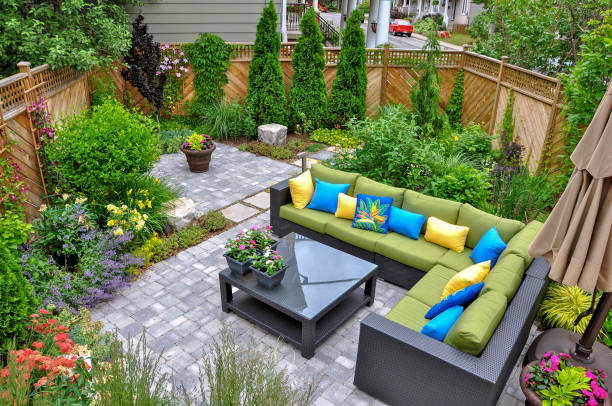
Composting FAQs
As composting enthusiasts, we comprehend the importance of adopting the right composting methods for your garden. One essential component in any garden composting setup is selecting the appropriate composting system. In this section, we will answer some frequently asked questions about garden composting to help you make a well-informed decision.
How Do You Start Composting?
Starting composting in your garden is a straightforward process that involves the following steps:
- Choose the Right Composting System: You can choose from several composting methods based on your available space, the amount of compostable waste you generate, and your personal preferences. Options include composting bins, composting tumblers, worm composting (vermicomposting), or a simple compost heap.
- Collect Compostable Materials: Start collecting compostable materials from your kitchen and garden. This can include fruit and vegetable scraps, coffee grounds, eggshells, grass clippings, leaves, and small branches. Avoid composting meat, dairy, and oily or fatty food waste as they can attract pests.
- Achieve a Good Green/Brown Balance: Aim to maintain a balance between ‘green’ materials (high in nitrogen, e.g., vegetable peels) and ‘brown’ materials (high in carbon, e.g., dry leaves). A ratio of 1 part green to 2 parts brown is generally recommended.
- Turn Your Compost Pile: Regularly turn or stir your compost pile to ensure it gets enough air. This encourages the aerobic bacteria responsible for the decomposition process and prevents unpleasant odors.
- Wait and Watch: Depending on various factors, it may take anywhere from two months to a year for your compost to fully mature. Once it looks like rich, dark soil and smells earthy, it’s ready to use!
Remember, composting is a learning process. It may take some time to get the hang of it, but with patience and practice, you’ll soon be producing your own nutrient-rich compost for your garden.
What Should You Not Put In Compost?
While many kitchen and garden waste materials can be composted, there are certain things you should avoid adding to your compost pile to maintain its health and effectiveness. Here’s a list of items that should not be put in compost:
- Meat, Bones, and Fish Scraps: These can attract pests like rodents and flies. They also take a long time to decompose.
- Dairy Products: Like meat, dairy products such as milk, cheese, yogurt, and cream can attract pests and give off unpleasant odors as they decompose.
- Fats, Oils, and Grease: These substances can create a greasy layer in the compost pile that’s hard for microorganisms to break down, slowing the composting process.
- Pet Waste: Dog and cat feces can contain parasites and pathogens that are harmful to humans. It’s best to keep them out of your compost pile.
- Diseased Plants and Weeds: Diseased plant material can spread the disease to other plants when the compost is used. Weeds, especially those with seeds, can sprout in your compost pile and spread when the compost is applied to your garden.
- Chemically Treated Wood: Wood that has been treated with chemicals or preservatives can release those chemicals into your compost and, ultimately, your garden.
- Glossy or Colored Paper: While plain, uncoated paper can be composted, glossy or colored paper often contains chemicals and heavy metals that can contaminate your compost.
- Coal or Charcoal Ash: These can contain substances harmful to plants. Wood ash can be composted in small amounts, but it can make your compost too alkaline if overused.
By keeping these items out of your compost, you’ll ensure a healthier, more efficient composting process.
Can You Put Grass Clippings In Compost?
Absolutely! Grass clippings can be a great addition to your compost pile. They are considered a “green” material, meaning they are rich in nitrogen, which is essential for the composting process.
Here are a few things to keep in mind when composting grass clippings:
- Balance: Since grass clippings are a “green” material, you’ll want to balance them with “brown” materials—those rich in carbon like leaves, straw, or shredded newspaper. A good rule of thumb is a 2:1 ratio of browns to greens.
- Layering: Layer your grass clippings with brown materials to prevent them from matting together, which could create an anaerobic environment that slows down the composting process and produces unpleasant odors.
- Herbicides: If your lawn has been treated with chemical herbicides, you might want to avoid composting the clippings as these chemicals can remain in the compost and may affect the growth of plants where the compost is applied.
Adding grass clippings to your compost pile is a fantastic way to recycle your yard waste into a nutrient-rich soil amendment for your garden.
“From Scraps to Soil: The Tale of Your Trash’s Transformation!”
And there you have it, folks! Our deep dive into the world of composting comes to a fruitful finish. We began this journey with the simple premise that composting is nature’s way of recycling — a principle that sets the stage for our exploration. Through our ‘Green Thumb 101: 6 Fascinating Facts On Composting For Beginners’, we’ve discovered that not only can composting significantly reduce the amount of waste that ends up in our landfills, but it also gifts us with nutrient-rich soil for our beloved plants.
From understanding that composting enriches the soil by improving its structure and providing essential nutrients, to debunking the myths around composting being a stinky or pest-inviting process, our journey has been enlightening. The cherry on the compost cake? Realizing that composting, while seemingly a complex biological process, is not rocket science, and with a little patience and the right methods, each of us can transform our kitchen and garden waste into black gold!
Remember, our journey through composting isn’t just about reducing waste or enhancing the health of our gardens. It’s about playing our part in nature’s grand recycling process. It’s about helping our planet breathe a little easier. As you venture into the world of composting, remember that each fruit peel, each coffee ground, and every leaf you compost, makes a difference.
In closing, don’t just be a gardener, become a ‘compost-er’. Step into the fascinating world of transforming your trash into your garden’s treasure. Happy composting, and may your gardens bloom with the vigor of your efforts!

Hi there, I’m Mark Apletree, a gardening enthusiast with a passion for gardening, and gardening tools. I’ll be your go-to guide for all things related to gardening. The purpose of this website is to assist you in selecting the most suitable garden gear that meets your specific requirements.
See All Posts